Visit Belfast for a truly Titanic Experience - Scotland on Sunday Travel
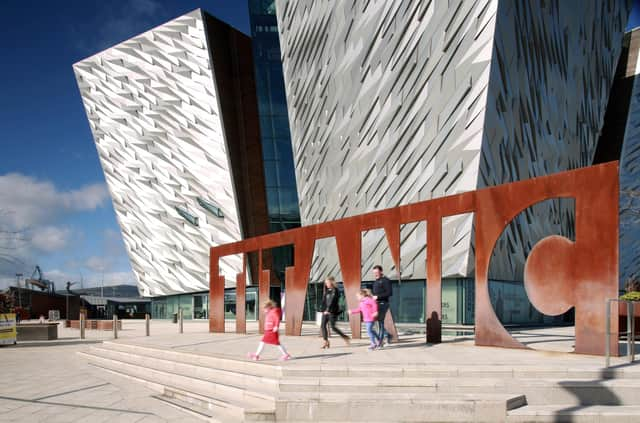

Unfairly, Belfast has existed in a transient state within my brain. Defined mostly by the exit of the ferry onto the industrial docklands and the utilitarian nature of the M1 motorway, it has always been a place I have visited to merely travel through.
My history with the city was, therefore, surface level. My understanding of what was once the island of Ireland’s biggest city as it boomed, propelled ever forward by the bristling heartland of international shipbuilding could not have been considered sea-worthy. Ironically, it was distinctly surface-level.
Advertisement
Hide AdAdvertisement
Hide AdThe sprawling docks of Belfast define the city’s industrial past, and dominate the view out of the window as you arrive into Belfast City Airport. The smaller of the city’s two airports, it is named after the town’s most famous and suitably flawed sporting export, George Best. It is also the destination of Aer Lingus Regional’s route from Glasgow, operated by Emerald Airlines. To describe the flight as short would be underselling it, it is a real blink and you’ll miss it flight.
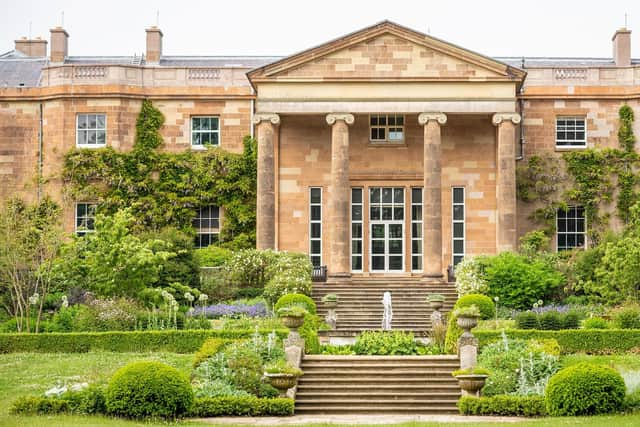

First on the docket was a trip to the phenomenal Titanic Experience (tickets start at £25 for an adult). The eight-storey, £77m building is a triumph of modern architecture, defining the previously derelict area of the docks, towering above in a manner that evokes the sheer scale of the world’s most famous ship.
Inside, there is an exhibition dedicated to the story of the Titanic. But, to be honest, that is a red herring. This is, obviously, the story of the ship itself, those on it and those who built it, but in reality it is an in-depth telling of Belfast at the turn of the 20th century and its social and economic fabric.
Give yourself two hours at least to walk through the four-floors worth of galleries which include a ride through the reimagined Harland and Wolff shipyard of old, a moving wall of names with passenger histories for those who perished and those lucky enough to survive, and a hanging model of the ship decorated with ever-changing coloured lights. The newest version of the exhibition also includes new artefacts including the violin of orchestra member, William Hartley, and a lifejacket from a passenger who died in the disaster. It is, at times, deeply moving, but at its best it is a celebration of industrial Belfast and engineering brilliance
After a quick bite to eat at our home for the night, the Titanic Hotel (where I ate an enjoyable open club sandwich and on which I will say more later), we walked a quick 15 minutes to another historic location linked to the unsinkable ship. Titanic Distillers have made the old Pump House at the Thompson dock, used to work on the ship itself, their home. The brand new distillery has only just opened as of September, and thus unfortunately there is little in the way of whisky to taste. Their premium tour (£40) which includes a taste of a vodka and a blended whisky takes you around the building which is still home to machinery from the time of the Titanic, including pumps. So strong is the link to history, that the modern distilling equipment was lifted in by a century-old yellow Kilmarnock-constructed crane built into the very fabric of the building which, to the astonishment of the distillery, still worked during construction.
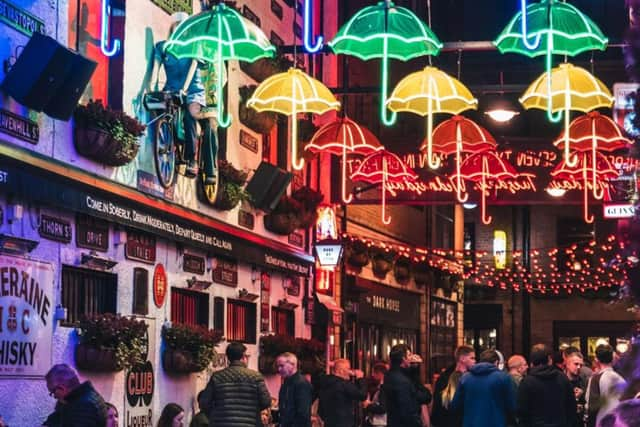

Dinner was in the centre of Belfast, a short taxi drive away, at the excellent Home Restaurant. Our guides assured us that many of Belfast’s best restaurants open later in the week (we were there on Tuesday), but the food on offer at Home must be hard to beat. We shared several starters including delightful beef arancini and indulgent duck pate, before selfishly guzzling down our mains. My venison ragu with rigatoni, rich in depth of flavour, was phenomenal and my only regret was not asking for the recipe. Dessert was a special, a delightfully sweet burnt cream tart, all finished off with several glasses of Domaine des Lauriers Picpoul de Pinet white wine.
Another short walk (much of Belfast’s city centre is walkable or easily accessible with a taxi) and we were in the city’s bustling Cathedral Quarter and in the bar of the Duke of York. Adorned with old Guinness adverts and packed to the rafters with locals and tourists alike, the pub is that perfect blend of busy but not overwhelmingly so. And, critically, they pull a mean Guinness.
Back to the Titanic Hotel, an imposing building in its own right which used to house Harland & Wolff’s offices. Restored from a near derelict state in the last decade, it is tasteful and luxurious in equal measure. The rooms are large and spacious, with the beds extremely comfortable. After a good night’s sleep, William, the head concierge, brought the place to life, as he took us round to rooms which included the Marconi room where the first message about the Titanic’s fate was received. The breakfast, a buffet with more options than one could wish for, was also excellent. Self-constructed pancakes with bacon and maple syrup is always a welcome addition to any trip.
Advertisement
Hide AdAdvertisement
Hide AdOur second day served as a reminder of Belfast’s more recent history and just how far it has come in the last couple of decades. Billy, our Value Cabs taxi driver, whisked us through the streets of his childhood home, bringing the destruction, horror, and human cost of the euphemistically named Troubles to life as we drove around the Divis Tower, the Falls Road, the Shankill Road, and Sandy Row, in a tour that was a reminder of a fragile peace and of Belfast’s rapid progress since the Good Friday Agreement.
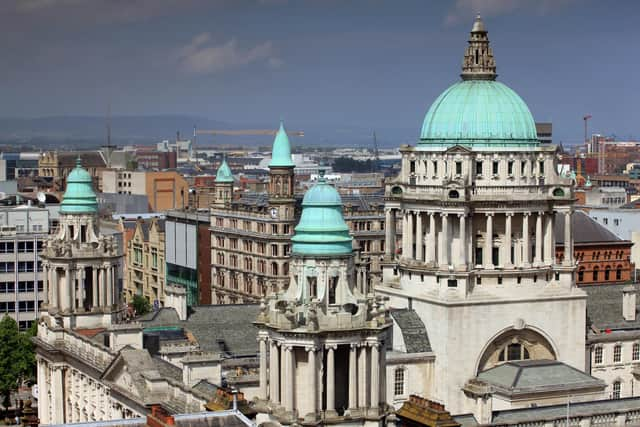

Lunch was at Mourne Seafood Bar in the city centre, where we were dropped off by Billy. The modern-style restaurant has a fishmongers in the front window and is a seafood lover’s dream. I opted for delicious, tomato sauce covered crab claws to start and beautifully marinated white wine and cream mussels for the main. Despite the portions being gigantic, with the crab claws the largest I have ever had the joy of tackling, I could have eaten everything on the menu. It was absolutely joyous.
Royal Hillsborough and the castle that gives the town its name was last on our list. Packed with art and history, the building is a beautifully preserved Royal history of Belfast. The official residence of the Secretary of State for Northern Ireland, with regular royal guests including the late Queen and King Charles III, the castle tells the story of the changing relationship between Northern Ireland and the UK, including unfinished artworks of Gerry Adams and Martin McGuiness, as well as those of the King and other royals.
Then it was back to the docks and to Belfast City Airport and, almost without noticing, home.
Flights
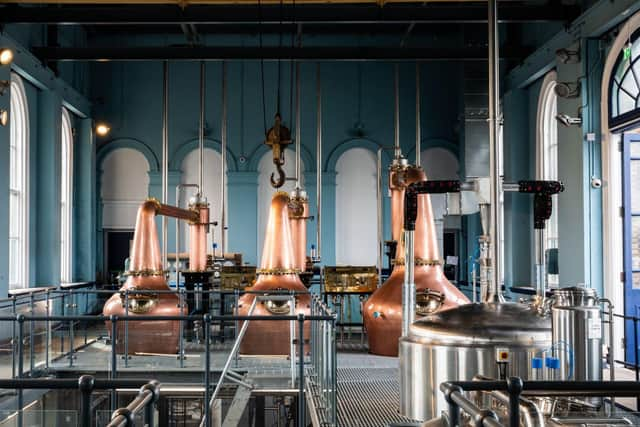

GLA: Aer Lingus Regional operates a year-round service between Glasgow and Belfast City Airport, up to twice daily. With fares starting at £32.99*, customers can book their tickets now via www.aerlingus.com
*One-way as part of a return trip